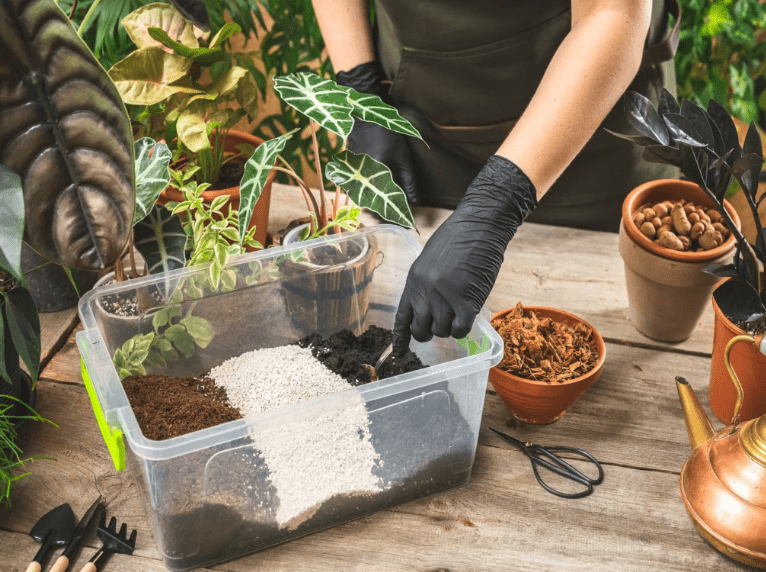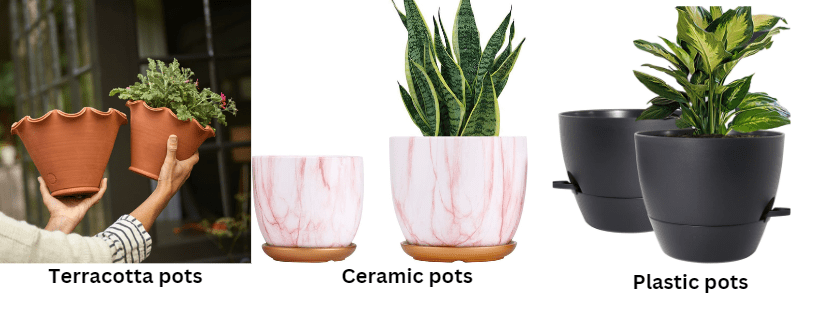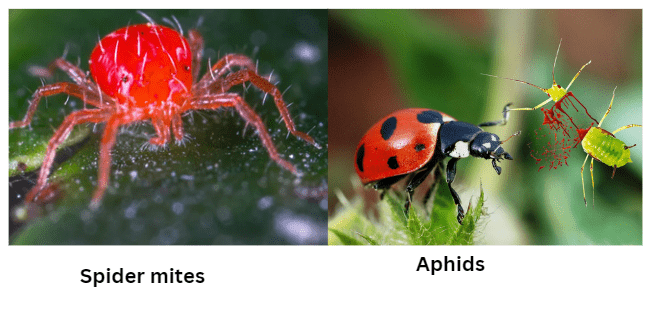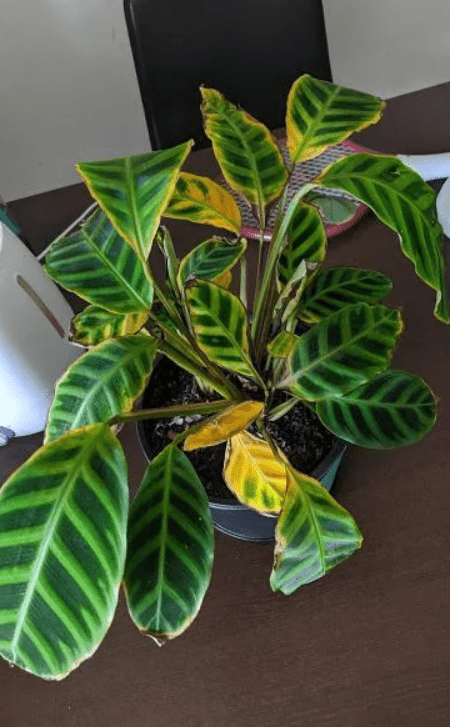
Zebra Plant Flower: Tips for Thriving Blooms Indoors
Are you tired of struggling to keep your zebra plant flower thriving indoors? Look no further, because in this post, we’re going to share with you the insider tips and expert advice you need to create a beautiful and vibrant indoor garden. With our proven tips, you’ll be able to impress all your guests with stunning zebra plant blooms. Don’t miss out on these essential tips that will take your indoor gardening game to the next level!
Table of Contents
ToggleUnderstanding the Zebra Plant Flower
A. Origin and Natural Habitat
The zebra plant, also known as Aphelandra Squarrosa, is native to the tropical rainforests of Brazil. It thrives in warm, humid conditions with bright, filtered sunlight. Understanding its natural habitat is crucial to successfully cultivating and nurturing this stunning plant indoors.
B. Characteristics of the Zebra Plant
The zebra plant is recognized by its striking green leaves with white or silver stripes, resembling a zebra’s stripes, hence its name. It can produce vibrant, colorful blooms in a variety of shades, adding a pop of color to any indoor space. With the right care and attention, you can encourage these beautiful blooms to flourish and impress all who see them.
Choosing the Right Location
A. Light Requirements
When it comes to providing the perfect environment for your zebra plant, the right location is key. This stunning plant thrives in bright, filtered sunlight, so finding a spot with plenty of natural light is crucial. Avoid direct sunlight, as this can scorch the leaves and cause them to lose their beautiful stripes. Instead, opt for a location with bright, indirect light to ensure your zebra plant can photosynthesize and grow to its full potential.
In addition to light, the zebra plant also requires warm, humid conditions to thrive. Consider placing it in a bathroom or kitchen where humidity levels tend to be higher, or invest in a humidifier to create the perfect environment for your plant.
By understanding and providing for the natural habitat of the zebra plant, you can ensure it will flourish and become a stunning focal point in any indoor space. So, take the time to choose the right location and watch as your zebra plant rewards you with its striking beauty.
B. Temperature and Humidity Needs
When it comes to caring for your zebra plant, it’s essential to consider its temperature and humidity needs. Instead of placing it in a location with harsh, direct sunlight that can harm the plant, opt for a spot with bright, indirect light. This will allow your zebra plant to thrive and reach its full potential through photosynthesis. Additionally, the zebra plant requires warm, humid conditions to truly flourish. Consider placing it in a bathroom or kitchen where humidity levels tend to be higher, or invest in a humidifier to create the perfect environment for your plant. By understanding and providing for the natural habitat of the zebra plant, you can ensure it will become a stunning focal point in any indoor space. So, take the time to choose the right location and watch as your zebra plant rewards you with its striking beauty. And don’t forget about the ideal temperature range of 65-75°F to keep your zebra plant happy and healthy. With the right care, your zebra plant will thrive and bring beauty to your home.
Soil and Potting Considerations
A. Best Soil Mix for Zebra Plants
The best soil mix for zebra plants is one that is well-draining and slightly acidic. Look for a potting mix specifically designed for succulents or cacti, or create your own mix using equal parts of perlite, sand, and peat moss. This will ensure that water doesn’t collect around the roots, which can lead to rot, while also providing the right nutrients for your zebra plant to thrive. Additionally, choose a pot with drainage holes to further prevent waterlogging. By using the right soil mix and potting considerations, you can set your zebra plant up for success and enjoy its beauty for years to come.

B. Selecting the Right Pot
When selecting the right pot for your plants, it’s crucial to consider the proper size and drainage. You want to choose a pot that allows for adequate room for the roots to grow and develop, but not so large that it retains excess moisture. Opt for a pot that is slightly larger than the plant’s current root ball, and ensure it has drainage holes to prevent waterlogging. Additionally, consider the material of the pot – terracotta and ceramic pots are porous and allow for better airflow, while plastic pots retain moisture more effectively. By selecting the right pot for your plants, you can provide them with the ideal environment for healthy growth and longevity. Don’t underestimate the importance of potting considerations in ensuring the well-being of your plants.

Watering Practices
A. How Often to Water
When it comes to watering your plants, it’s essential to pay close attention to the specific needs of each plant. Rather than sticking to a strict schedule, take the time to monitor the soil moisture levels and adjust your watering frequency accordingly. Some plants may require more frequent watering, while others may prefer a drier environment. It’s important to strike the right balance to avoid overwatering or underwatering your plants. By being attentive and responsive to your plants’ individual requirements, you can ensure they receive the perfect amount of hydration to thrive. Remember, proper watering practices are key to the health and vitality of your plants, so take the time to give them the care and attention they deserve.
B. Water Quality and Techniques
It is crucial to consider the water quality and techniques when watering your plants. The type of water you use can greatly impact the health of your plants. Ensure that the water is free from contaminants and chemicals that could harm your plants. Additionally, using the right watering techniques, such as watering at the base of the plants and avoiding wetting the foliage, can help prevent disease and promote healthy growth. By paying attention to these details, you can make sure that your plants are getting the best care possible. Don’t overlook the importance of water quality and techniques in nurturing your plants to their full potential. Your plants will thank you for it!
Fertilizing for Healthy Growth
A. Nutrient Needs
Fertilizing is crucial for the healthy growth of your plants. Just like humans need a balanced diet to thrive, plants require essential nutrients to reach their full potential. By providing your plants with the right balance of nitrogen, phosphorus, and potassium, you can ensure they have the nutrients they need to grow strong and healthy.
Don’t underestimate the power of fertilizing in supporting the health and vitality of your plants. Whether you’re growing vegetables, flowers, or trees, giving your plants the nutrients they need can make a world of difference in their growth and overall well-being. So don’t skimp on fertilizing – your plants will thank you for it with lush, vibrant growth!
B. Signs of Nutrient Deficiency
Without proper nutrients, your plants can suffer from stunted growth, yellowing leaves, and poor fruit or flower production. These are all signs of nutrient deficiency that can be easily remedied with the right fertilization. Don’t let your plants struggle to reach their full potential – give them the nutrients they need and watch them thrive! With the right balance of essential nutrients, your plants will be able to withstand stress, resist disease, and produce bountiful harvests. So don’t wait until you see signs of deficiency – be proactive and provide your plants with the nutrients they need to flourish. Trust me, your plants will thank you for it!
Pruning and Maintenance
A. Pruning Tips for Shape and Health
Pruning your plants is essential for maintaining their shape and promoting overall health. By removing dead or overgrown branches, you can encourage new growth and improve air circulation, which can help prevent disease. Regular pruning also helps to maintain the shape and appearance of your plants, keeping them looking tidy and attractive in your garden.
Additionally, by removing excess foliage, you can redirect the plant’s energy towards producing fruit or flowers, resulting in a more bountiful harvest. So don’t be afraid to pick up those pruning shears and give your plants the care they need to thrive. Trust me, a little bit of maintenance now will pay off in the long run with healthier, more beautiful plants.
B. Cleaning the Foliage
Pruning is not just a chore, it’s a crucial part of caring for your plants. It’s a way to show your plants some love and help them reach their full potential. By cleaning the foliage, you’re not only keeping your plants looking their best, but you’re also removing any potential hiding spots for pests and diseases. This simple act can go a long way in maintaining the health and beauty of your garden. So don’t overlook the importance of cleaning the foliage – your plants will thank you for it!
Encouraging Blooming Indoors
A. Blooming Season and Conditions
When it comes to encouraging blooming indoors, the right conditions are key. Providing your plants with the right amount of light, water, and nutrients can make all the difference in their blooming season. By creating a nurturing environment for your plants, you’re not only helping them thrive, but you’re also bringing a burst of color and beauty into your home. So don’t underestimate the power of providing the right conditions for your indoor plants – the results will be well worth the effort. Let’s make our indoor spaces bloom with life!
B. Common Challenges to Blooming
While it may seem challenging to encourage blooming indoors, it’s important to remember that with the right care and attention, it is possible to overcome any obstacles. Some common challenges include lack of sunlight, improper watering, and nutrient deficiencies. However, by adjusting the conditions and providing the necessary care, you can help your plants overcome these challenges and bloom beautifully in your home. Don’t let these obstacles discourage you – instead, see them as opportunities to learn and grow as a plant parent. Let’s work together to create a thriving indoor garden!
Common Pests and Diseases
A. Identifying and Preventing Pests
1. Common pests like spider mites and aphids
Common pests like spider mites and aphids can be a nuisance, but with vigilance and proper care, they can be managed effectively. Regularly inspecting your plants for signs of infestation and taking proactive measures such as isolation, pruning, and natural predators can prevent pests from taking over your indoor garden. By staying attentive and proactive, you can keep your plants healthy and thriving.

B. Managing Diseases
Diseases can be a threat to your indoor garden, but with the right knowledge and care, you can prevent and manage them effectively. Proper watering, ventilation, and sanitation practices can help minimize the risk of diseases such as powdery mildew and root rot. Additionally, using disease-resistant plants and proper soil sterilization can further protect your garden from potential threats. By staying informed and taking proactive measures, you can create a healthy and thriving indoor garden that will bring you joy and satisfaction. Let’s work together to keep our plants safe and disease-free!
Repotting the Zebra Plant
A. When and How to Repot
The zebra plant may need to be repotted when it becomes root-bound or outgrows its current container. Repotting should be done in the spring or early summer when the plant is actively growing. When repotting, carefully remove the plant from its current pot and gently loosen the roots before placing it in a slightly larger container with fresh, well-draining soil. Be sure to water the plant thoroughly after repotting and place it in a location with bright, indirect light. With the proper care and attention, your zebra plant will thrive in its new home. Don’t wait until it’s too late to give your plant the space it needs to grow – report it today!
B. Post-Repotting Care
After repotting your zebra plant, it’s important to provide the right care to help it adjust to its new environment. Be sure to water the plant thoroughly, but allow the soil to dry out slightly between waterings to prevent root rot. Keep the plant in a location with bright, indirect light to help it acclimate to its new pot.
Additionally, avoid fertilizing your plant for at least a month after repotting to give it time to settle into its new container. Keep an eye on the plant for any signs of stress, such as wilting or yellowing leaves, and make adjustments to its care as needed.
By following these post-repotting care tips, you can ensure that your zebra plant continues to thrive in its new pot and grows to its full potential. Don’t neglect your plant after repotting – give it the care and attention it needs to flourish!
Troubleshooting Common Problems
A. Yellowing Leaves
Yellowing leaves can be a sign of overwatering, so be sure to allow the soil to dry out slightly between waterings. It could also be a sign of nutrient deficiencies, so consider fertilizing your plant after it has had time to settle into its new pot. Keep an eye on the plant for any signs of stress and adjust its care as needed to ensure it stays healthy and vibrant. Remember, it’s important to give your plant the attention it needs to thrive!

B. Wilting or Drooping
Wilting or drooping can be a sign of underwatering, so be sure to check the soil moisture regularly and water your plant as needed. It could also be a sign of root rot, so be sure to repot your plant in well-draining soil and make sure the pot has proper drainage. Ensure your plant is receiving the right amount of sunlight and adjust its placement if necessary. Don’t neglect your plant after repotting – give it the care and attention it needs to flourish! With the right care, your plant can bounce back and thrive in its new pot. Remember, it’s up to you to ensure your plant’s health and happiness!
C. Lack of Blooming
Your plant’s lack of blooming could be due to a variety of factors, but with a little care and attention, you can encourage it to bloom beautifully. Ensure your plant is receiving the right amount of sunlight, as some plants require more light to produce flowers. Fertilize your plant with a balanced fertilizer to provide it with the nutrients it needs to bloom. Prune your plant to encourage new growth and flowering. If your plant is in a container, make sure it has proper drainage and repot it if necessary. Remember, your plant is relying on you to provide the care and support it needs to bloom, so be patient and consistent in your efforts. With the right care, your plant will reward you with a stunning display of blossoms. Don’t give up – your plant has the potential to bloom beautifully with your help!
In conclusion, creating a thriving indoor garden with zebra plant flowers is not as difficult as it may seem. With the right care and attention, you can enjoy beautiful blooms that will impress everyone who sees them. By following our expert tips, you can ensure that your zebra plant flowers thrive and bring joy to your home. Don’t miss out on the opportunity to create a stunning indoor garden with these essential tips!
Frequently Asked Questions (FAQs)
You should water your zebra plant flower when the top inch of the soil feels dry. It’s important not to overwater, as this can lead to root rot.
The zebra plant flower thrives in bright, indirect light. Avoid placing it in direct sunlight, as this can scorch the leaves.
During the growing season, you can fertilize your zebra plant flower once a month with a balanced, water-soluble fertilizer.
The zebra plant flower prefers temperatures between 65-75 degrees Fahrenheit. It’s important to keep it away from drafts and sudden temperature changes.
You can propagate your zebra plant flower by taking stem cuttings and rooting them in water or soil.
The zebra plant flower prefers well-draining soil, such as a mix of potting soil and perlite or sand.
The zebra plant flower typically blooms in the spring and summer, but with proper care, it can continue to bloom throughout the year.
Keep an eye out for mealybugs and spider mites, as these are common pests that can affect the zebra plant flower. It’s also important to avoid overwatering, as this can lead to root rot.
